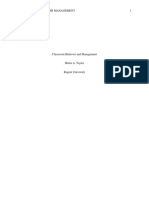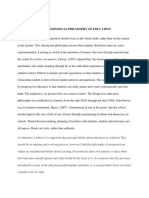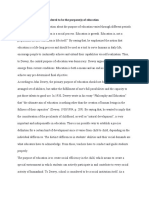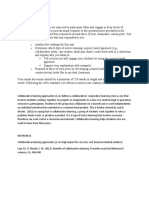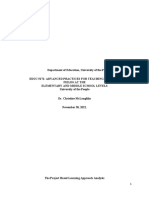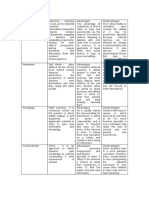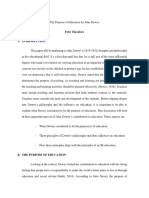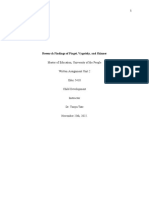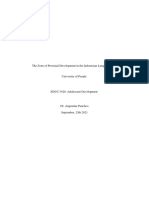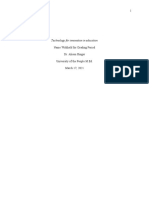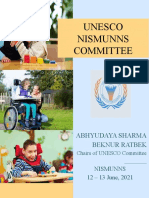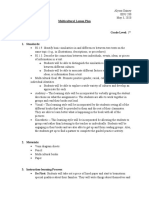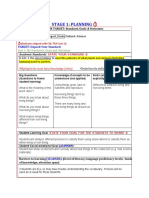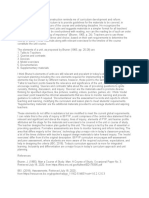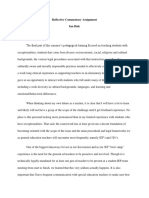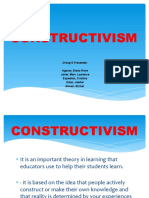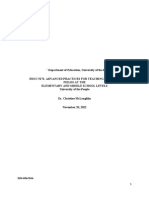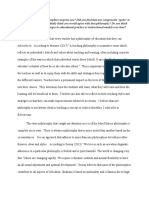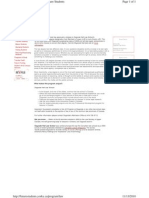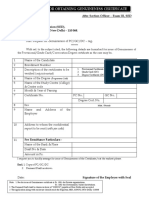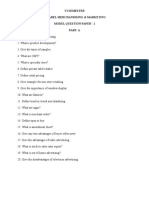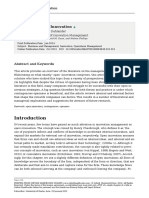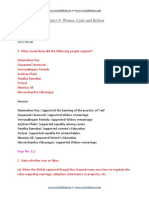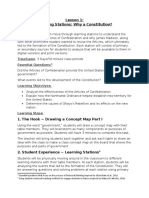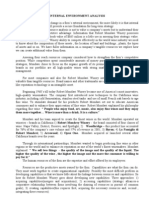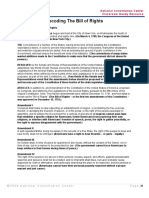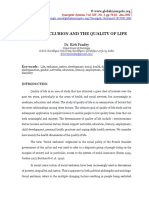``Department of Education, University of the People
EDUC 5010: Education in Context
Dr. Debra Cahl
November 29, 2021
1
�Theories of Education
Teachers need to be equipped with the essential skills in order to foster students’
development and ensure that they reach their full potential. In order to cater to the varied needs
of learners, teachers have adopted different theories of learning which they use as a base for
teaching and learning. When you understand the different learning theories you are able to use
different strategies to ensure that students have the best learning experiences. According to
Fulbrook (2019) “Learning theories are a set of principles that explain how best a student can
acquire, retain and recall new information.”
Learning Theories fall under four main categories: Behaviourism, Cognitivism
Constructivism and Humanist. Based on my readings I have adopted the Constructivism theory
of education. I subscribe to this theory because I believe that in this age we the aim of education
should be about educating the child as a whole and not just teaching them from textbooks. I also
like the idea of Constructivism because it is a student centered approach.
Constructivists Approach
The Constructivist Approach is an approach to teaching and learning that recognizes that
people learn through observations and scientific study. When learners experience things and
reflect on their experiences they are able to construct their own understanding and knowledge of
the world. When we discover new things we have to integrate it with our previous ideas and
experience which might change our beliefs or allow us to discard the new information as
irrelevant. Proponents of this theory believes that we are active creators of our own knowledge
therefore, we should ask questions, explore our environments, and assess our knowledge. The
founders of constructivism include Russian psychologist Lev Vygotsky, Swiss psychologist Jean
2
�Piaget, American psychologist Jerome Bruner, and American philosopher and psychologist John
Dewey. HRDevelopmentinfo (2016)
John Dewey believes that learners should be actively involved in their own learning as
they construct knowledge based on their experiences. Learners develop schemas to organize
acquired knowledge so that when events occur, they are able to reflect on their experiences and
integrate the new ideas with their prior knowledge. He also believes that “As an educator, it is
important to understand the theory of constructivist learning. Each student that enters your
classroom has a unique perspective on life that has been created by their unique experiences.
This will impact their learning. If the basis of the constructivist theory states that students
construct new knowledge on what they have already had, the entry point of their learning journey
is of utmost importance. Learning theories are as valuable as credentials to educators; it is
important to understand what will affect the learning journey of your students.” (Kurt, 2021).
Lev Vygotsky developed Social Constructivism and believed that when children interact
socially it leads to their development because their learning abilities are highlighted when they
are guided by adults.
Key Concepts in the Constructivist Theory
When I think about Constructivism the following words come to my mind.
Active – Learning is active as children are engaged in hands-on activities. They interact
with each other by asking and answering questions about a particular topic.
Reflective – Learners have to be constantly reflecting on their experiences so that they
can find new ways of doing things.
3
� Accountability – Students are accountable for their own learning and have the
responsibility of playing their part in collaborative efforts.
Collaborative – Students have to be constantly collaborating with each other in order to
complete a task through group works, projects etc.
Problem Solvers – Students have to investigate, ask and answer questions, then come up
with solutions in order to solve problems.
Advantages of Constructivist Learning
Some authors argue about the advantages and disadvantages of the Constructivists Approach.
HRDevelopmentinfo has also proposed a list of advantages and disadvantages.
Students have to rely on active, hands-on tasks in order to engage with lessons and gain
knowledge about a topic.
The teacher acts as a guide and facilitator in a controlled environment to help students
create their own ideas and assess their understanding of a topic
Student’s prior knowledge about a topic is engaged. Therefore, it combines prior
knowledge in order to eliminate any inaccuracies regarding new knowledge.
Students develop self-confidence as a result of finding conclusions on their own.
Student’s critical thinking and problem solving skills are stimulated because of the work
they have to do in order to reach a conclusion.
Students are encouraged to explore, experiment and conduct research on topics of
interest.
4
� Students are able to interact with each other, and learn as a team, which will help them
develop Teamwork for the future.
Students are allowed choices in activities.
Students help their peers to formulate conclusions in order to, maximize knowledge
construction.
Students have to deal with complex issues which prepares them to face real world issues.
Disadvantages of Constructivist Learning
The strategies require a lot of preparation time for the teacher.
It takes a long time to get the students accustomed to this approach.
Students might develop the wrong conclusion because they are too active.
The teacher has difficulty assessing whether or not the student has reached the correct
conclusions.
It can affect the learning process for those students who require considerable support to
master previously learnt knowledge.
It requires more assessment strategies than in standard teaching.
The theory needs to be adapted to the student’s level of development so it only works for
some students.
It is not compatible with certain subjects or a standardized curriculum, as some students
might need more time to complete certain tasks.
A different grading system is required than because the efforts of students need to be
taken into consideration even if he or she has not reached the right conclusions.
5
�How Does Constructivism Work in my Classroom?
I totally agree with Dewey that children learn best by doing. Therefore, it is my
responsibility to promote active learning in my classroom using student-centered activities. I
have to ensure that I provide my students with the best learning experiences they need in order to
develop the skills they need to function in society. I make sure that I get to know my students so
that I can identify their needs and ensure that my lessons are differentiated to cater to these
varied needs. My class is always “full of action” as students are constantly engaged in enquiry
based learning activities in which they have to think creatively and critically and develop
problem-solving skills. My students are always encouraged to ask and answer questions instead
of just sitting and being passive learners.
We are now living in an era where technology is the backbone of all education system.
We have to understand that in this unpredictable world, where the skills that students need to
learn are different from those learnt in the 20th century. Students are now required to learn 21st
century skills. Based on my experience of working in an IB school I have learnt that they have
adopted the Principle of Constructivism in their classrooms because according to Ibo.org
“Throughout all IB programmes, students develop approaches to learning skills and the attributes
of the IB learner profile. The IB learner is positively challenged to think critically and to learn in
a flexible environment crossing disciplinary, cultural and national boundaries. IB students take
responsibility for their own learning and understand how knowledge itself is constructed,
underpinned by our unique theory of knowledge (TOK) course.” Teachers, therefore, have to
provide support for students and create opportunities for them to interact with each other and
engage in real-life experiences through cooperative groups, projects, etc. so the true purpose of
education will be realized.
6
�References
Drew, C. (2020). What Is Constructivism in Education? Piaget’s Pros & Cons. What is
Constructivism in Education? Piaget's Pros & Cons (helpfulprofessor.com)
Fulbrook, P. (2019). What are Learning Theories? https://teacherofsci.com/learning-theories-
in-education/
HRDevelopmentinfo, (2016). The Pros and Cons of Constructivism in Modern Day Education.
The Pros and Cons of Constructivism in Modern Day Education – HRDevelopmentinfo.com
Ibo.org. Why the IB is different. https://www.ibo.org/benefits/why-the-ib-is-different/
Kurt, S. (2021). Constructivist Learning Theory. Constructivist Learning Theory - Educational
Technology



